Baltimore Oriole
_______________________
Baltimore Oriole (m. Hoagy Carmichael, w. Paul Francis Webster) — copyright date: 13 March 1942
Four recordings of “Baltimore Oriole” by Hoagy Carmichael
1. Carmichael recorded the song for the soundtrack of the 1944 film To Have and Have Not. According to Page Four of the V-Disc discography at World War II V-Discs (@Lowellsplace.com), Carmichael’s film soundtrack recording of “Baltimore Oriole” was used for a contribution to the V-Disc project. It was issued, together with a recording of “Hong Kong Blues,” on the B-side of V-Disc 383 (see label above). The A-side features two recordings by Josh White, “Cotton Eyed Joe” and “One Meat Ball.”
According to the Internet Movie Database, the film To Have and Have Not had its premiere on 11 October 1944, so Carmichael’s soundtrack recording of “Baltimore Oriole” was most likely made before that date. 45Worlds.com indicates that V-Disc 383 was released in March 1945.
In this version the line that is typically transcribed, presumably from later, better known versions by Carmichael or others, as “Baltimore Oriole, messed around with that big guy,” is clearly heard as “Baltimore Oriole, buzzed around with that big eye.” Yes, the word “buzzed” replaces “messed,” which is heard in all the other versions by Carmichael included here, but my focus is on the last two words of the line. I believe the phrase “big guy,” which most people sing instead of “big eye” at the end of this line, is an error of transcription. It’s a mondegreen. According to my ears, Carmichael sings “big eye” in every version that he recorded included in this page, though it’s enunciated more clearly in this version than in the others.
.
2. I haven’t positively identified it, but I think the recording in the following video might be side A of the 10-inch 78 rpm single ARA 142, by Hoagy Carmichael & Orchestra. Issued c.1945, the single was backed with “Sweet Lorraine.” ARA was a short-lived record label, originally named American Recording Artists.
.
3. In 1956, Carmichael recorded the song with a group of jazz musicians arranged and conducted by Johnny Mandel. Eleven recordings from the sessions at the Forum Theatre on 10, 11, and 13 September 1956 were released on the 1957 album Hoagy Sings Carmichael with the Pacific Jazzmen, (US) Pacific Jazz Records PJ 1223. The AllMusic review of the album, by Scott Yanow, indicates the support of an “11-piece all-star jazz group.”
In this version, the compound adjective “now-and-then-could-happen,” heard in the recordings above following the adjective “womanlike,” has been modified to “now-and-then-could-happen-to.”
Ignore the title of the following video. It’s Hoagy with the Pacific Jazzmen, not “Hoagy Carmichael & His Orchestra.”
.
4. The 1958 LP Ole Buttermilk Sky, Kapp KL 1086, includes another recording of the song by Hoagy Carmichael. The following recording might be from that album.
album links:
.
The Four Freshmen, featuring vocal solo by Don Barbour — issued in March 1953 on the single Columbia F2398, b/w “Poinciana”
.
 Barbara Lea with the Johnny Windhurst Quartet — recorded on 18 October 1956 at Van Gelder Studio, Hackensack — Barbara Lea (ldr), Dick Cary (ah), Johnny Windhurst (t), Al Hall (b), Dick Hyman* (p), Osie Johnson (d), Barbara Lea (v)
Barbara Lea with the Johnny Windhurst Quartet — recorded on 18 October 1956 at Van Gelder Studio, Hackensack — Barbara Lea (ldr), Dick Cary (ah), Johnny Windhurst (t), Al Hall (b), Dick Hyman* (p), Osie Johnson (d), Barbara Lea (v)
Barbara Lea biography:
____________
.
Bob Dorough — from his debut album Devil May Care, Bethlehem Records BCP-11, released in October 1956
Dorough had evidently been misinformed about the location of the Tangipahoa River, which he places “near Baltimore.” According to Wikipedia, the Tangipahoa originates in southwest Mississippi, and runs for 122 miles, extending into southeast Louisiana.
.
Carmen McRae — recorded on 8 August 1958 and released on the 1958 LP Birds of a Feather, Decca DL 8815
 personnel:
personnel:
Carmen McRae (vocal), Irving ‘Marky’ Markowitz (trumpet), Al Cohn (tenor sax), Ben Webster (tenor sax), Don Abney (piano), Barry Galbraith (guitar), Aaron Bell (bass), Don Lamond (drums); arranged by Ralph Burns
The duration of the audio file in the first video below agrees with the track length given by CarmenMcRae.com and Amazon (3:51), while that in the second video is at least 19 seconds shorter. However, the second doesn’t appear to be cut. Instead, comparison of the two suggests that either two separate recordings were released or the speed was altered on one of them.
________________
(below) shorter version, ends at about 3:31 or 3:32
.
Chris Connor — from her 1959 album Witchcraft, Atlantic SD 8032 (Stereo), Atlantic 8032 (Mono)
.
Sheila Jordan — from her debut album Portrait of Sheila, Blue Note BLP 9002, released in 1962; the album was recorded at Van Gelder Studio, Englewood Cliffs, NJ on 19 September and 12 October 1962
.
Judy Henske — from the 1964 LP High Flying Bird, Elektra EKL-241 (mono), EKS 7241 (stereo)
Judy Henske – vocal
Jack Marshall – guitar
.
Pat Thomas — from the 1964 LP Moody’s Mood, MGM Records (US) E 4206 (Mono), MGM (US) SE 4206 (Stereo), MGM (UK) MGM-C-971
ThomShelford, the provider of the video, attaches the following information:
Pat Thomas is a relatively obscure singer who made three albums, to my knowledge (there may be later ones) in the early sixties. This track is from “Moody’s Mood” which was recorded in August 1962. Her first album for MGM was the acclaimed ‘Desafinado’ which followed her debut ‘Jazz Patterns’ on the Strand label in 1961. On this particular track, written by Hoagy Carmichael with lyrics by Paul Francis Webster, her diction leaves a little to be desired, nevertheless it’s a lovely song with a nice arrangement by Claus Ogerman…
The original line “I’d like to ruffle his plumage” is oddly changed to “I’d like to plunder his ruffle.”
.
Judy Roderick — from her 1964 debut album Ain’t Nothin’ But the Blues, Columbia CL 2153 (mono), CS 8953 (stereo)
Judy Roderick – vocal, guitar
John Hammond, Jr. – harmonica
Bobby Scott – piano
unknown – drums
.
Helen Merrill with Dick Katz — recorded on 6 December 1965; issued on the 1967 album The Feeling is Mutual, Milestone Records MSP 9003
.
Booker Ervin — recorded at Webster Hall in NYC on 12 September 1967; issued on the 1967 LP Booker ‘n’ Brass, Pacific Jazz Records ST-20127
Personnel on this track:
Booker Ervin – tenor saxophone
Freddie Hubbard – trumpet
Garnett Brown – trombone
Kenny Barron – piano
Reggie Johnson – bass
Lenny McBrowne – drums
Teddy Edwards – arranger, conductor
.
Bud Dashiell — from the 1968 album I Think It’s Gonna Rain Today, Warner Bros. Records WS 1731
video to be replaced when available
______________________
The Cryan’ Shames — from their 1968 LP Synthesis, Columbia CS 9719
.
Clusone 3 — from the 1999 hatOLOGY (Switzerland) label CD album Rara Avis, hatOLOGY 523
.
Solitaire Miles — from the album Born to Be Blue, released in 2010
.
Laura Collins — from the 2010 album Introducing Laura Collins (Spolite)
personnel:
Laura Collins – vocal
Dick Pearce – trumpet and flugelhorn
Sam Dunn – guitar
Barry Green – piano
Jeremy Brown – bass
Matt Skelton – drums
.
Kathy Blackburn — Jazzschool Institute Vocal Concert at Freight & Salvage Coffeehouse in Berkeley, CA on 5 December 2011
Kathy Blackburn link: Four & More
.
Jim Rorie — from his 2012 CD Up in the U.P.
The artist says,
I’ve always loved Hoagy Carmichael’s music. I had a copy of this by Bud Dashiell [see above] on vinyl and I’ve always loved the song. No copyright infringement intended. Here’s my version.
.
Frank Garland — at Hobgoblin Music in Leeds, accompanying himself with an Ashbury baritone ukulele borrowed from the wall; published at YouTube on 8 February 2013
.
Bob Dorough Trio — recorded, according to an editorial review at Amazon.com, “in September 2014 at the Delaware Water Gap in Pennsylvania” — released 9 June 2015 on the CD But For Now
Bob Dorough – piano, vocals
Michael Hornstein – alto saxophone
Tony Marino – bass
____________________________
* Dick Hyman played under the pseudonym “Richard Lowman” for the session. The “ah” abbreviation for Dick Cary’s instrument stands for “alto horn.”











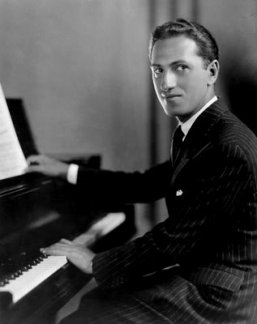

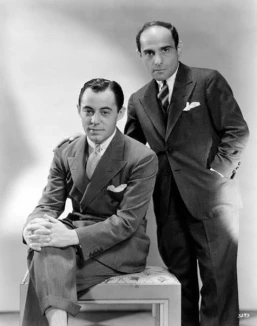

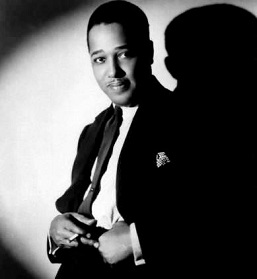



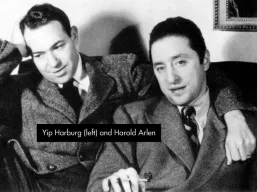
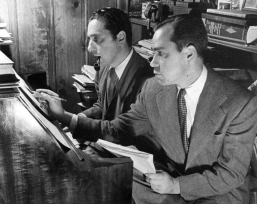



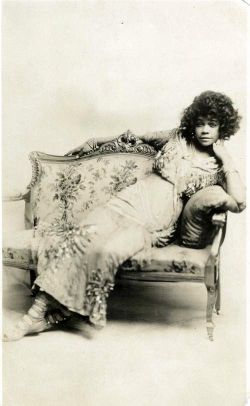





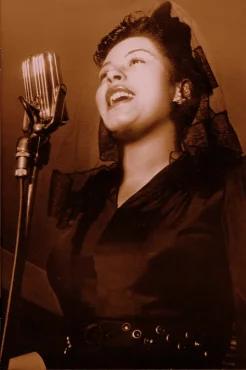




Nov 03, 2019 @ 18:50:31
Where is George Harrison’s version? He did a phenomenal job.
LikeLike
Nov 04, 2019 @ 00:07:34
Hi Jon,
Yeah, well…We don’t agree on that point. It’s one of many recordings that I chose to skip. Among the things that I don’t like about the recording are the boring rock beat, the arrangement, and the middle-to-late-era Beatles sounding back vocals (ahh-ahh, ooh-ooh, etc.), the latter of which would be fine in other contexts, e.g. on “Your Mother Should Know.”
~doc
LikeLike
May 17, 2023 @ 03:21:01
George Harrison also recorded this song!
LikeLike